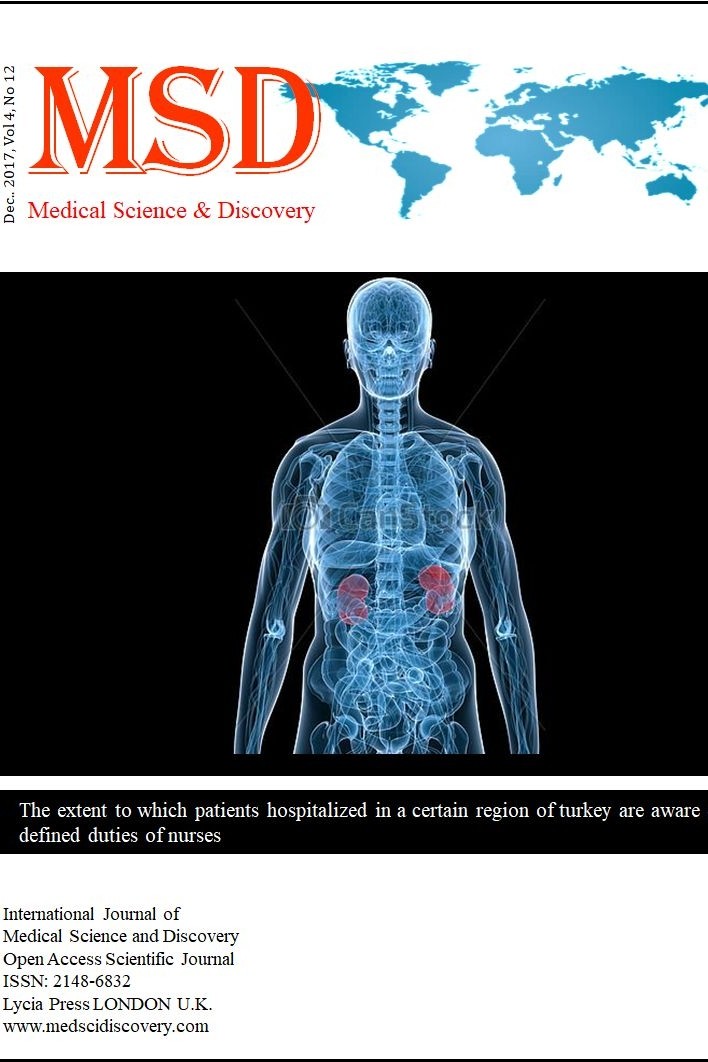Prevalence of HIV infection in young male candidates scheduled for military recruitment and whole population in Turkey
Prevalence of HIV infection in young male candidates scheduled for military recruitment and whole population in Turkey
___
- http://www.unaids.org/en/media/unaids/contentassets/documents/epidemiology/2013/gr2013/UNAIDS_Global_Report_2013_en.pdf
- United Nation’s Children’s Fund (UNICEF). Opportunity in Crisis: Preventing HIV from early adolescence to young adulthood. New York: Unicef; 2011.
- Joint United Nations Programme on HIV/AIDS (UNAIDS). “Global Report 2010, Core Slides, Slide 11.”
- http://www.hatam.hacettepe.edu.tr/veriler_Haziran_2013.pdf (HIV/AIDS dataset of Health Ministry of Turkish Republic (in Turkish, accessed at Feb 4, 2014).
- http://www.tuik.gov.tr/PreHaberBultenleri.do?id=15974 (in Turkish, accessed at April 4, 2014).
- http://www.euro.who.int/en/media-centre/sections/latest-press-releases/central-asia-in-the-spotlight-growing-hiv-epidemic-among-people-who-inject-drugs (accessed at April 4, 2014).
- http://www.dunyabulteni.net/?aType=haber&ArticleID=19423j0 (in Turkish, accessed at Feb 4, 2014).
- http://www.saglik.gov.tr/TR/belge/1-32110/1-aralik-dunya-aids-gunu.html (in Turkish, accessed at Feb 4, 2014).
- Gulcur L, ilkkaracan P. The ‘‘natasha’’ experience: migrant Sex workers from the former Soviet Union And Eastern Europe in Turkey. Women’s Studies International Forum, 2002; 25: 411 – 421.
- http://www.unicef.org/turkey/dn/_ah14.html (accessed at Feb 4, 2014).
- Yüncü Z, Kabukçu B. Madde kullanım bozukluğu olan ergenlerde HBV: yaygınlık, riskler, aşılama. Anatolian Journal of Psychiatry 2008; 9:208-216.
- Mathers, B.M., et al. Global epidemiology of injecting drug use and HIV among people who inject drugs: A systematic review. Lancet, 372: 1733–1745.
- http://www.kom.gov.tr/Tr/Dosyalar/bulent_demirci.pdf “Turkey Drug Report-2010” (in Turkish, accessed at Feb 4, 2014.
- http://www.saglik.gov.tr/TR/belge/1-32110/1-aralik-dunya-aids-gunu.html (inTurkish, accessed at Feb 4, 2014).
- http://www.irinnews.org/pdf/pn/plusnews-media-fact-file-military.pdf (“HIV/AIDS and the Military”, accessed at Feb 4, 2014).
- Coşkun Ö, Karakaş A. Sexually Transmitted Infections and Protection in Soldiers. TAF Prev Med Bull. 2012; 11: 345-352. doi:10.5455/pmb.1-1334742102 (in Turkish).
- ISSN: 2148-6832
- Başlangıç: 2014
- Yayıncı: Zafer AKAN
The significance of lower extremity FDG PET/CT imaging in patients with unknown primary tumor
Bekir TASDEMİR, Zeki DOSTBİL, Kemal UNAL, Sule YİLDİRİM, Ayse AKATLİ
Ultrasound-guided lateral sagittal infraclavicular block in a patient with flexion contracture
Hyperemesis gravidarum, socio-cultural factors and maternal short psychiatric status
Mehmet SENTURK, Kasim TURAN, Yusuf CAKMAK, Mehmet BUDAK
The Role of MRCP on Management of the Acute Biliary Pancreatitis
Melih YUKSEL, Murat YİLDAR, Erdogan BULBUL
The effects of 2-aminoethyl diphenylborinate on L-Arginine induced acute pancreatitis in the rats
Murat YİLDAR, Murat BASBUG, Omer OZKAN, Faruk CAVDAR, İsmail YAMAN, Hasan AKSİT, Musa OZYİGİT, Figen ASLAN, Hayrullah DERİCİ
Duran TOK, Vedat TURHAN, Salim OZENC, Ergenekon KARAGOZ, Gurkan MERT
Ulas SOLMAZ, Emre MAT, Atalay EKİN, Levent DERELİ, Özgür TURAN, Gulsah DEMİRTAS, Cenk GEZER, Pinar HASDEMİR, Sevil SAYHAN, Muzaffer SANCİ
Shahriar ANVARİ, Sohrab NEGARGAR, Ahmad Jamei KHOSROSHAHİ
Approach to hydatid cyst rupture patient who administered with anaphylactic shock
Ayse Arpaci, Kemalettin ACİKGOZ, Esma Coskun, Hakan Eke, İsmail TOPCU
The Effect of Ezetimibe on Plasma Viscosity, Fibrinogen and Lipid Profile
Nurver SİPAHİOGLU, Denizhan KARİS, Hafize UZUN, Fikret SİPAHİOGLU, Selcuk ERCAN, Alev ERCAN
